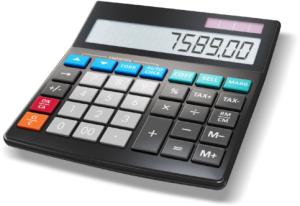Creating A Dashboard For Your Business
So, while there are a host of things that we could measure or simply note about the workings of your business, what are the few – the critical few – that are your KPIs?
What Are KPIs?
KPIs indicate the status or functioning of a key area of a business and should complement a business’ overall targets and relate to its core activities. As a result they will differ depending on the business.
In a business which puts its phone number on its TV ads, for example, answering customer calls before the third ring will be a key business activity, so the number of calls answered in this manner may be one of its KPIs. Other KPIS might be the number of callers who then buy over the phone, or agree to an appointment, etc.
For starters, the KPIs you choose for your business must:
- Reflect the goals of your business
- Be critical to its success
- Be measurable and comparable
- Allow for corrective action if things go wrong
Common Business Performance Indicators
As we said, in that space shuttle there are a million things happening, but at any one time only a small percentage of those are critical to the mission’s success. Part of the skill of being a shuttle pilot is not so much knowing what to pay attention to, but knowing what you can ignore!
Similarly, in your business, there is probably a lot of “busy-ness” happening all the time, and getting involved in the non-critical details is a form of “fatal distraction”!
The following provides just a few items in broad categories that may jog your thinking as to what you should and should not be paying attention to.
In no particular order (because they vary in importance in every business) some KPI candidates might be:
Number of inward or outward phone calls or new contacts;
- per staff member
- per day
- per marketing campaign
- per district
- per market segment (based on age group, location, etc)
Quotations;
- Requested
- Issued
- Accepted/Declined
- Days from request to provision
Clients;
- Number active
- Number inactive
- Number of active clients
- Analysis of high value client purchases (80/20 Rule)
- Instance of purchases per term per client
Orders;
- Fulfilment time (days, hours, etc)
- Fulfilment ratio (percentage of order filled)
Sales Value or Numbers;
- To existing clients
- To new clients
- Value added to a core product sale
- Lost sales (no stock on hand)
- Conversion rate of sales from quotes, enquiries, calls, etc
Gross Profit (Sales – Cost of Sales);
- By sales person
- By product line
- By market segment
Cash flow;
- Cash sales
- Accounts receivable payments
- Accounts payable payments
- Non-stock sales income
- Stock purchases
- Overheads
- Fixed costs
- Sales expenses
- Travel expenses
Cash on hand;
- Cash
- Long term Deposits
- Liquidatable equities
Stock;
- Turns per line
- Value of holding
- Aged holdings (how long have we had a stock item on the shelf?)
- Obsolete/dead stock
Which KPIs should be tracked?
That depends on your industry. According to Wikipedia (the free encyclopedia), a retail performance system should track at least five (5) store and individual staff KPIs:
1. Sales per Hour – the monetary value of the individual’s and stores hourly sales.
2. Items Per Sale – the number of items sold by individual compared to the store average.
3. Average Sale – the average value of each individual sale compared to the store average.
4. Conversion Rate – the number of walk-ins that can be converted to sales.
5. Sales per Wages Spent – the fiscal contribution each salesperson makes, or how much is spent on wages compared to how much they sold.
What is your industry? What are the equivalent few critical KPIs for it?
It’s interesting to recall that Jim Collins, in his book “Good to Great”, noted that every one of the companies that he examined that had gone from good to great, had identified the few, critical indicators of performance for their business and homed in on raising their score on those.
Sure, just as our pilot has to run an eye over every gauge on the shuttle dashboard at some time, these G2G businesses watched all of their indicators on a regular basis, but they focused relentlessly on driving their chosen few KPIs through the roof – and it showed, year after year, in their performance figures.
How KPIs Can Help
Case 1: A training company had acceptable levels of sales over its first few years of trading, but showed no marked improvement. The sales manager was excellent at bringing in new business, so this didn’t seem to be the problem.
On closer inspection, it became apparent that repeat business per trainer was a key driver. Companies trained by two of its trainers had given them high volumes of repeat business, in stark contrast to the records for its three other trainers.
Monitoring was formalised, and targets were set against a key performance indicator (KPI) of repeat business per trainer per quarter. At the same time, the three trainers with the poorer performance figures agreed to undertake a train-the-trainer refresher course. Thereafter overall sales increased to the point that they had to take on another trainer.
Case 2: A gift manufacturer won a large order to produce fridge magnets for a chain of stores. The team worked flat out to meet the deadlines, but didn’t notice an impending cash flow crisis resulting from a fall in repeat orders from existing customers combined with a jump in raw material costs.
To make matters worse, the new client kept changing its mind about designs, causing delays and increased production costs. The manufacturer had to negotiate a revised overdraft with its bank, reducing profit margins on the new order.
By the time the order was complete, the company had lost several of its existing customers. A downturn in the retail market meant that its new client didn’t place any further orders.
Effective KPI targets could have prevented what occurred. The manufacturer would have recognised that customer retention was a business driver and set KPI targets on customer contacts and re-ordering. Cash flow forecasts would have highlighted the need to negotiate advances for the order.
Exercise
Allocate 3 uninterrupted hours to this task.
Firstly: Ask yourself what you want your business to deliver to you. Get that down pat, in a single, powerful sentence or two. (That’s effectively its “Mission Statement for You” – which might be a little different from its Client Mission Statement.
Start the dashboard design process by analysing your business – it may help to map it out as a flowchart starting with what you deliver and working backwards through the critical functions that you perform until you get to your raw inputs (stock, labour, materials, etc).
Next, work out the really critical points in the flow – the ones where when nothing happens or something happens or something happens wrong it costs you money or loses you sales. Perhaps start by assigning each critical point in the process with a priority rating of 1-10 where 10 is massive!
Now take a look at the high-value points and work out how you could measure them easily and quickly – we don’t want to create “another job” if we can avoid it.
Next, work out how you can get this measurement in front of you accurately, quickly, easily and reliably every day or week (depending upon the volatility of your business). (I know plenty of businesspeople who, as a result of selecting the right software and POS systems, know their gross profit per sale instantly, and a whole range of KPIs which charts their exact financial position, by the second!
Next to last: Make this a priority and make it happen.
Last – and often neglected: Use your new KPIs to steer your business to higher levels of performance (whether they be sales, profits, activity, satisfaction rating, or whatever).
Very last: Be prepared to test, refine and fine tune your KPIs until you know they are providing you with exactly the information you need, exactly when you need it (that is, before the fact), so that you can take advantage of the next opportunity as your magnificent dashboard radar tells you it’s coming over the horizon.
(One of the best sets of universal KPIs ever created is contained in the ProfiTune Business Analysis and the coaching tools that ProfiTune Business Improvement Specialists and Christopher Howard Profit Coaches use in guiding their clients to better management and bigger profits.)
If you need some help with this please contact us on info@profitune.com or call 1300 2 PROFIT





